Redcurrants: A guide to the planting, care, harvesting and pruning of this easy to grow fruit
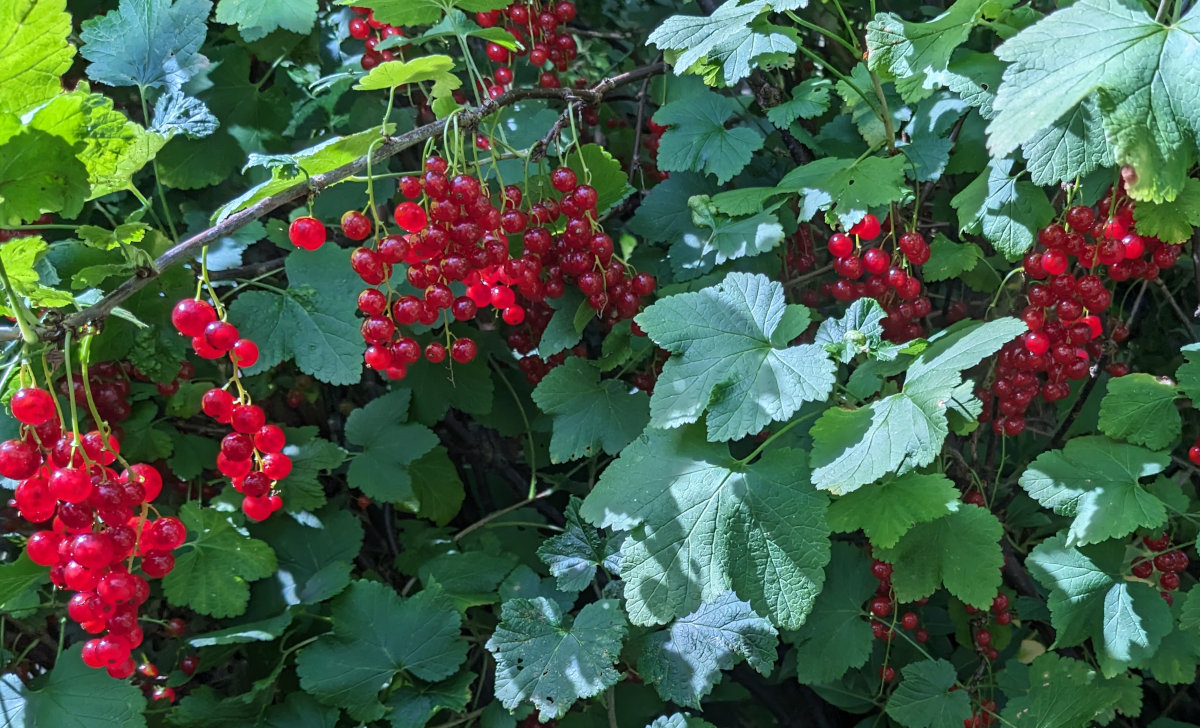
A red currant is a fully hardy, small, round red berry that is a member of the gooseberry family, and is closely related to black currants and white currants. Red currants are native to Europe, but are now grown in many parts of the world.
Table of Contents
Red currants have a tart flavour which I like, and are often used in jams, jellies, and sauces. They can also be eaten fresh or raw, but their tartness can be off-putting to some people. Red currants are a good source of vitamin C, and they also contain antioxidants.
Here are some of the health benefits of red currants:
- High in vitamin C: Red currants are a good source of vitamin C, which is an important nutrient for the immune system.
- Antioxidants: Red currants contain antioxidants, which can help protect the body against damage from free radicals.
- The redcurrant has a lower glycemic index value than many foods.
- Source of dietary fibre: Can help with digestive health.
- Redcurrants are a good source of iron: Iron is essential for forming red blood cells.
- Redcurrants are a good source of vitamin K: This can help with bone health and calcium control in the body.
Things I use redcurrants for:
One of the things you soon notice when you start growing redcurrants is they are all ready at the same time. This year I got all mine in just two pickings a week apart.
The most popular use for redcurrants is jam or jelly and I do make a few jars every year.
More popular in my house is a unsweetened puree used as a sauce for ice cream. You can add a little sugar if it is too tart for your taste buds. It is simple to make, use previously frozen berries and push through a sieve with a ladle. You can also use this puree to make redcurrant fool by stirring a few teaspoons into whipped double cream.
Below: My latest batch of redcurrant jelly.
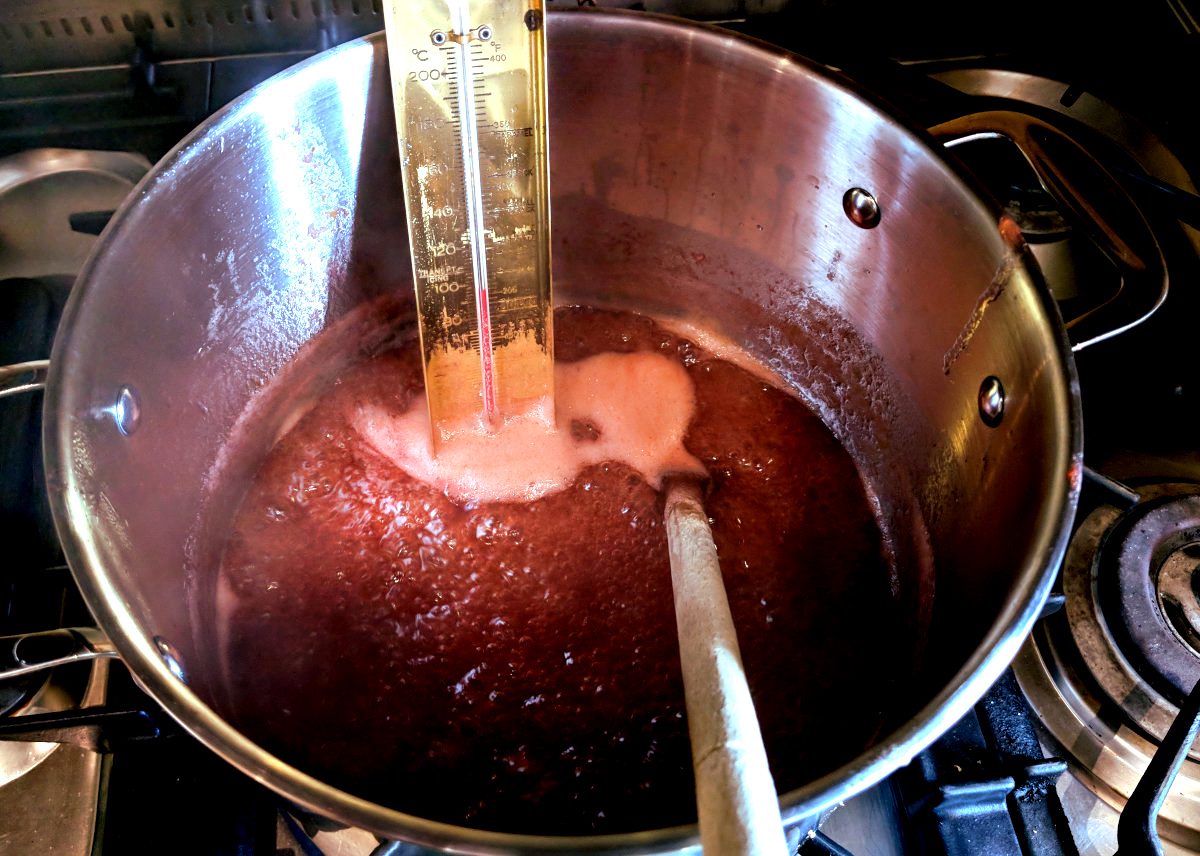
If, like me you have a palette for sharp and sour foods you can add some to cider vinegar for a salad dressing with a real kick.
Not everyone likes them whole as the seeds can be a pain but if you don't mind you can add them to pies or tarts.
Redcurrant gin is another adults only favourite around here, made by steeping them in your choice of gin for at least 3 months but preferably longer. Here is a complete list of every recipe I have tried for redcurrants.
Here is a complete planting and care guide for red currants:
The reality is the location you site your currants in will have more effect on when they are ripe than the variety you choose.
Below: The long strands of flowers on a redcurrant bush. They are self fertile but fruit yield is better with the aid of pollinators.
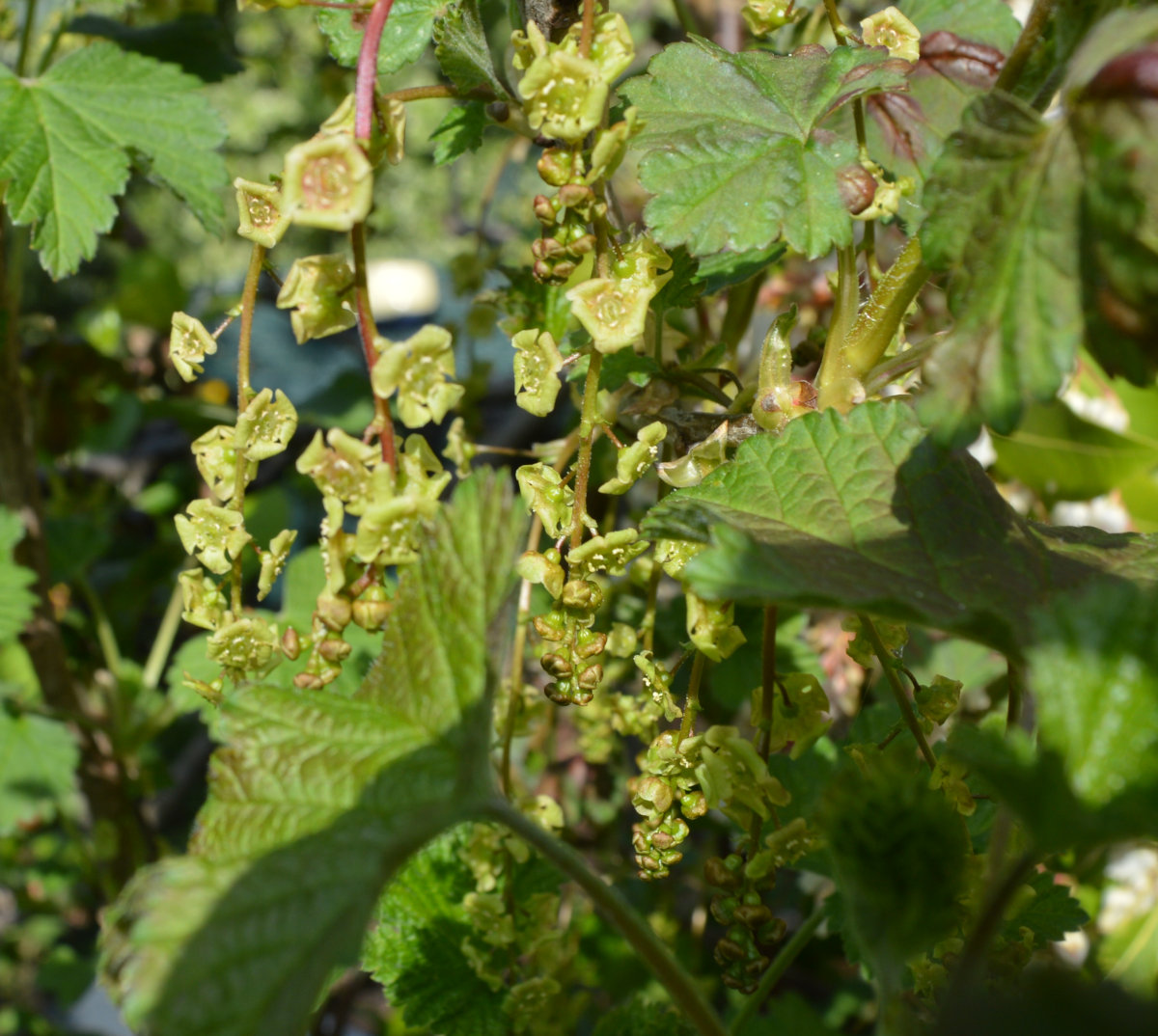
I have some in my back garden which faces south and gets full sun and they are ready a full 3 weeks before the ones in my front garden which is north facing.
Choosing your variety:
Redcurrants come in several cultivars, with variations in flavour, size, and resistance to diseases.
In my area, I opted for the 'Jonkheer Van Tets' variety, known for its excellent fruit production and disease resistance.
Site selection and soil preparation:
Redcurrants thrive in well-drained soil with good air circulation and full sunlight. I chose a spot in my garden with at least six hours of direct sunlight daily. While they will grow in a variety of locations the fruit will taste better if the bushes get more sunshine.
Ensure your soil has a pH level of around 6.0 to 6.5, slightly acidic. Proper soil preparation is key to a successful harvest.
Planting:
Planting redcurrants is relatively straightforward. I spaced my bushes about 3-4 feet apart to allow for adequate airflow and growth. Plant soft fruit a little deeper in dry locations. Adding compost or well-rotted manure improves soil fertility, which currants need for productive growth.
All members of the currant family of fruit bushed can be grown in pots, choose large deep pots and make sure to keep well watered and mulched.
Below: The fully formed but unripe fruit.

Dig a hole large enough to accommodate the root system, place the bush, and cover it with soil. Water thoroughly and mulch around the base to conserve moisture and suppress weeds.
- Red currants can be planted in the fall or spring, but avoid planting during frosty weather.
- Choose a sheltered and sunny spot with well-drained soil. The fruit is susceptible to wind damage.
- Prepare the soil by digging in some compost or manure.
- Space the plants 1.5-2 meters apart.
Watering:
Keeping the soil consistently moist, especially during the growing season and dry spells, is crucial for healthy fruit development. Inconsistent watering can lead to fruit splitting or dropping.
- Red currants need regular watering, especially during dry periods.
- Water deeply, so that the water reaches the roots but not waterlogged, as excessive moisture can lead to root rot.
- Mulch around the plants to help retain moisture.
Fertilising:
Redcurrants are relatively low-maintenance, but they do benefit from a yearly feeding. I used a balanced, slow-release fertiliser in early spring just as the flowers are beginning to appear.
- Red currants benefit from a light application of fertiliser in the spring.
- Use a balanced fertiliser, such as a 10-10-10.
- Do not over fertilise, once early in the year is plenty.
Pruning:
Pruning is essential for redcurrant bushes to encourage vigorous growth and maximise fruit production.
Below: Just another week to 10 days and they will be ready.
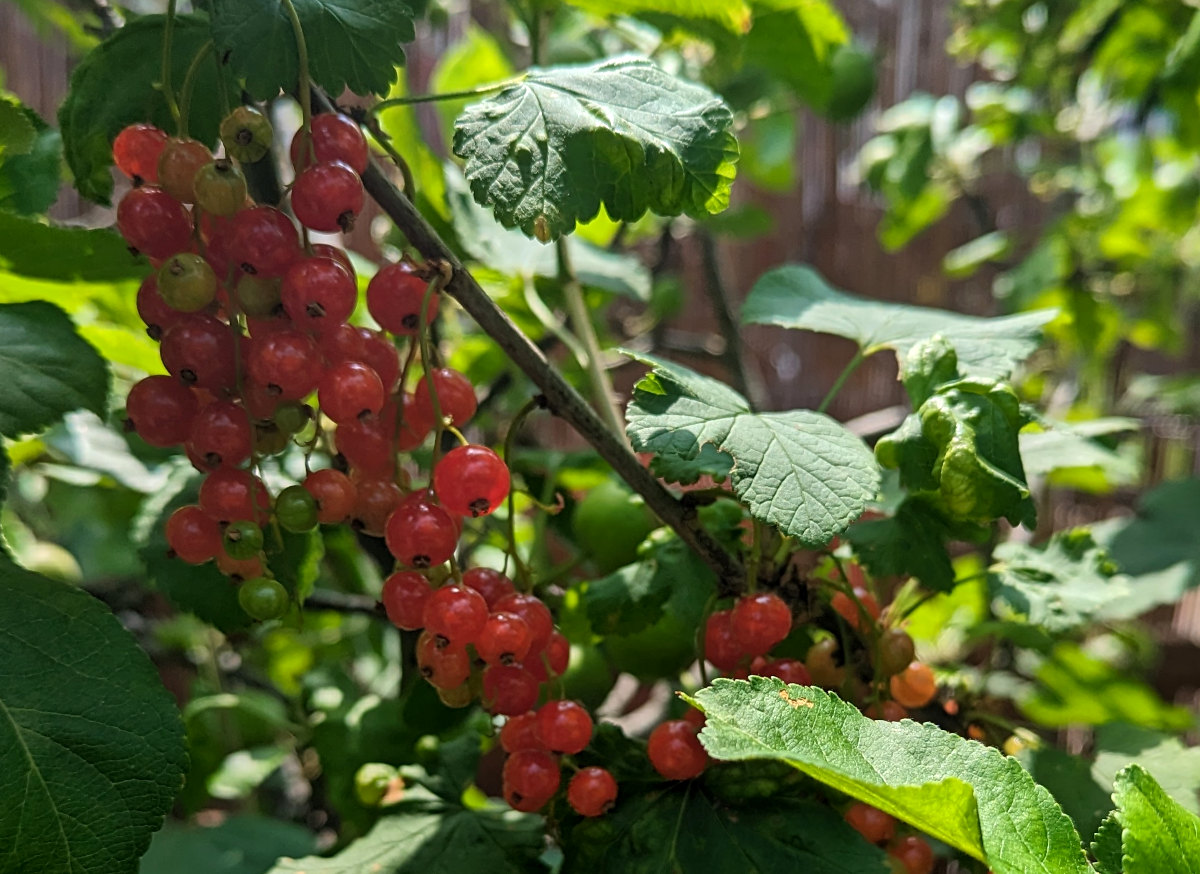
I pruned in late winter, removing old, weak, and overcrowded branches.
- Red currants need to be pruned regularly to keep them productive and healthy.
- Prune in the winter, after the plant has gone dormant.
- Remove any dead, diseased, or damaged branches.
- Thin out the plant to allow for good air circulation.
- Cut back the remaining branches to two or three buds.
Redcurrants produce fruit on one-year-old wood, so it's important to maintain a balanced framework of branches.
Harvesting:
The moment of truth arrives when the berries ripen to a vibrant red. Harvest time generally falls between June and July. The best redcurrants are those that are fully ripe but not overripe – they should be firm and not mushy.
Ripe redcurrants are a deep, glossy red, and they should come off the stems with minimal effort. They're plump, juicy, and have that distinctive tart-sweet aroma.
Below: Ready for picking.
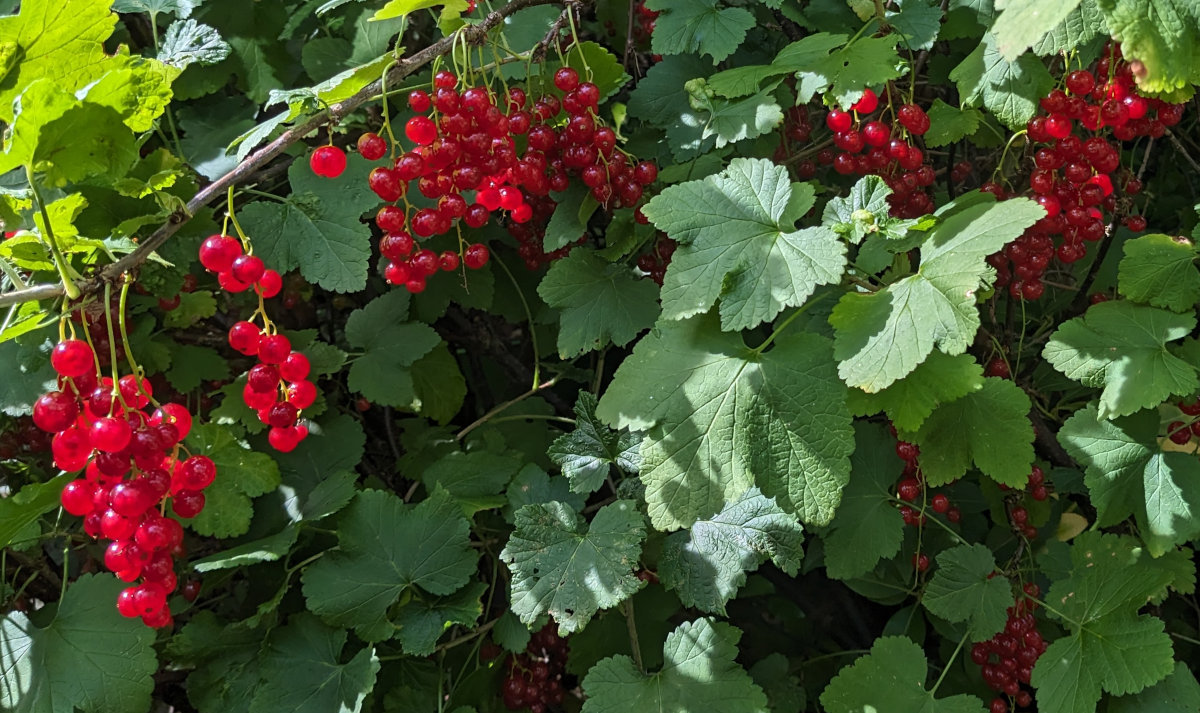
Gently pick the plump, ripe berries, being careful not to damage the delicate clusters.
- Red currants are ripe when they are a deep red colour.
- Harvest the berries by gently pulling them off the stem.
- Do not over-pick the berries, as this can damage the plant.
To maintain the quality of the harvest, I clean the redcurrants as I pick. Any leaves or debris that find their way into my collection basket are removed promptly to ensure I have a clean and beautiful harvest.
Below: How I pick redcurrants.
I like to start at the bottom of the cluster, as these berries tend to ripen first.
Pests and Diseases:
If you see any signs of pests or diseases, take action immediately to control them. Regular inspection and early intervention are key.
Below: Aphid and caterpillar damage to the leaves. The easiest way is to remove the infected leaves.
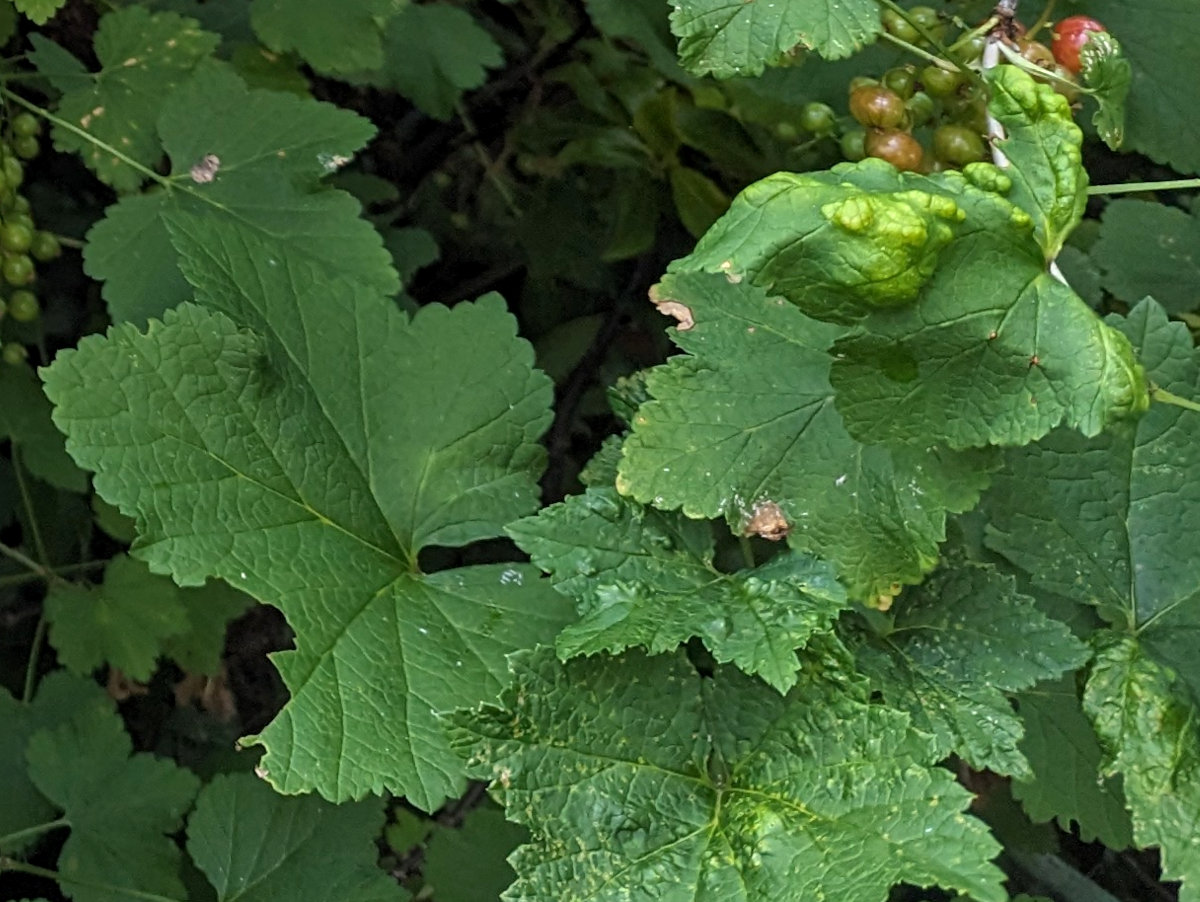
Red currants are susceptible to a few pests and diseases, including:
- Aphids,
- Birds,
- caterpillars
- Red spider mites,
- Powdery mildew,
- Botrytis.
I employ organic methods and ladybird larvae for aphid control and proper spacing for better air circulation to prevent mildew.
My tips for growing more and better currants:
- Chill hours: They require a period of cold dormancy, typically needing 800-1,500 chill hours (hours below 7°C or 45°F) to break dormancy and set fruit properly.
- Well-drained soil: Currants prefer soil that drains well to prevent root diseases. They can tolerate a range of soil types from sandy to loamy, but overly heavy clay should be avoided or improved with organic matter.
- Avoid frost pockets: Spring frosts can damage the early blossoms. Choose a site where cold air doesn't settle, or consider late-covering if frost is a recurring issue.
- Avoid excessive heat: Currants are not suitable for very hot climates, as high temperatures can stress the plants and reduce fruit quality.
- Air circulation: Good air movement around the plants helps prevent fungal diseases, which can be a problem in crowded or still conditions.
- pH levels: A slightly acidic to neutral soil pH of 5.5 to 7.0 is ideal. If the soil is too acidic, lime can be added; if too alkaline, sulphur can be used to lower the pH.
- Consistent moisture: While currants need consistent moisture, they don't like waterlogged conditions. Regular watering during dry spells is necessary, but good drainage is crucial.
- Keep birds away: Some garden birds like redcurrants as much as humans do. I cover my bushed from first fruit set with a fruit cage.
- Training: Currents can be trained in a fan up a wall for maximum productivity and ease of fruit picking.
- Mulching: Using organic mulch can help retain moisture and keep roots cool.
- Spacing: Ensure proper spacing (up to 1.5 to 2 meters or 5 to 6 feet apart) for air circulation and ease of management.
- Location hygiene: Keeping the area around currants free from debris and weeds can help manage pests and diseases like white pine blister rust, which affects black currants in North America.
The Redcurrant varieties:
| Variety | Season | Description |
|---|---|---|
| Jonkheer van Tets | An early-ripening variety | A productive and popular variety that is known for its sweet berries. It is also resistant to mildew. |
| Red Lake | Mid-season variety | A late-ripening variety that is known for its high yields. The berries are small but sweet. |
| Perfection | A variety that is resistant to mildew and blackcurrant gall mite. The berries are large and juicy. | |
| London Market | An old variety that is still popular today. The berries are small but sweet and tart. | |
| Rovada | Late-ripening variety | Produces long strings of juicy and flavourful berries. It is also resistant to powdery mildew and rust. |
| White Currant | A variety with white berries. The berries are smaller than redcurrants but have a similar flavour. | |
| Junifer | This is a new variety that is gaining popularity for its high yields, large berries, and excellent disease resistance. | |
| Pink Currant | A variety with pink berries. The berries are larger than whitecurrants and have a sweeter flavour. |
Most varieties are quite productive and a mature redcurrant bush can produce 2 or more kilograms of fruit per year.
